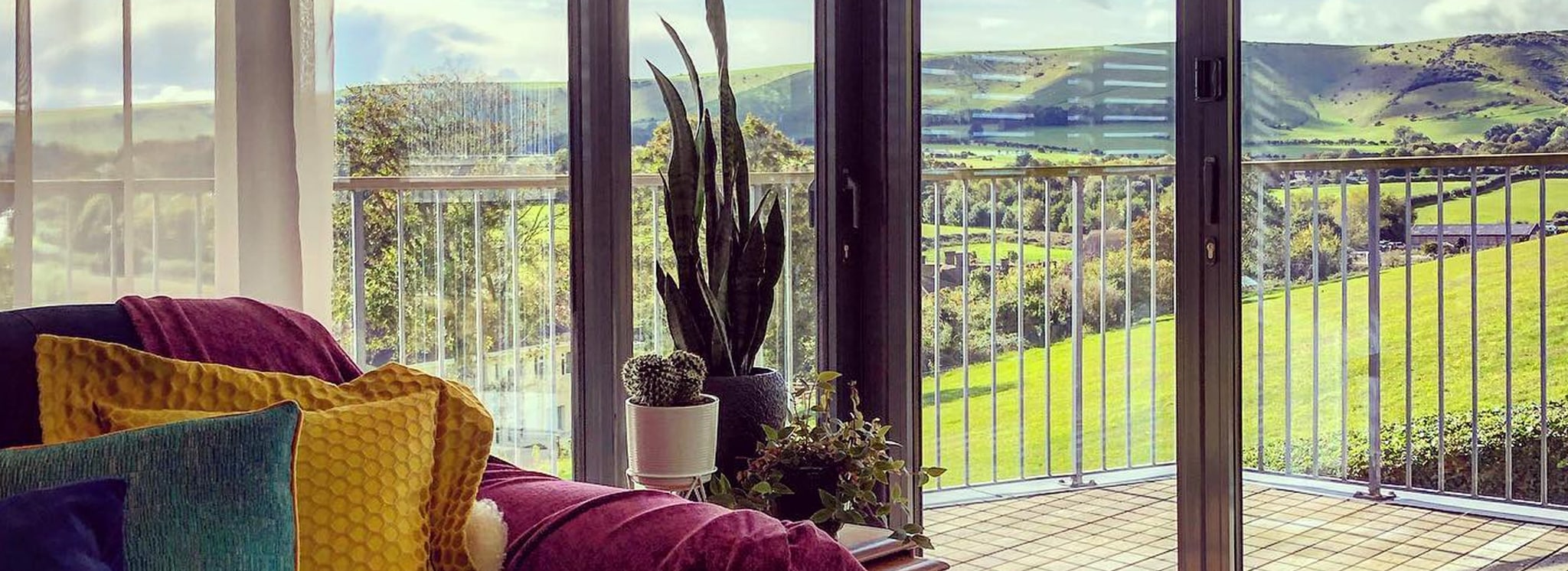
When it comes to ordering bifold doors there are a range of decisions to be made, but the vast number of combinations and options mean that some of those choices aren’t always the most straightforward. Read on to find out about some of the most common considerations.
Choosing the number of bifold door panels required is a good starting point. Typically, bifold doors are priced per panel so the most cost-effective method is to opt for the minimum number of panels required – however you need to bear in mind that whilst fewer/wider panel widths are likely to work out cheaper, they are also going to stick out further on to your patio or into your room when the doors are stacked open.
The IDSystems range of SUNFLEX bifold doors can be manufactured with panels up to 1200mm wide although typically we would more often see systems designed with panels between 1000-1100mm.
Our advice would to always aim to have an odd-numbered set of panels in your system, whether it be 3, 5 or 7 (or even larger), if the size of opening allows for it.
We suggest this because opting for odd number of panels means the lead door of the system (the one you open first) can act as a single-access door for everyday use, perfect for just nipping out to hang the washing out without needing to open multiple panels.
We can design bifold doors that open inwards or outwards – it is completely your choice. That said, the vast majority of doors we install for external use are configured to open outwards.
Choosing doors that open out means when the panels stack open, they do so over the patio rather than taking up room in your house. It also means that any water dripping off the doors after it has rained drips down onto the patio and not your carpet or internal floor.
There are a couple of occasions where internal opening doors are the best solution. For example, if you are installing bifold doors on an upper floor and are incorporating a Juliet balcony, or if you have a small courtyard garden where having doors opening out would take up too much space.
When viewing your doors from the inside you will need to make a decision as to which direction you wish the bifold doors to slide open. This is completely up to you and will be determined by the layout of your house, patio and room.
For larger sets, typically with 6 panels or more, you may wish to consider centre-opening bifold doors. With 6-panels you would have a centre pair of doors, much like French doors, that would then open up with 3 panels sliding left and 3 panels to the right.
One of the key decisions you need to make early on in your design process is the track option you wish your doors to run on. Are you looking to create a completely seamless transition between inside and out and therefore require a flush-track or will your bifold doors sit on a sill from which you will step down into your garden?
If you want to include a flush track then you need to allow for the depth of the track when designing your opening, so that your internal floor finish (tiled, vinyl, wooden, concrete etc) perfectly matches up with the height of the inside of the track.
On the outside you also need to ensure that your patio or decking is designed to meet the same floor height and, since the patio is now level with the inside of your house, you also need to incorporate a drainage channel into the design so that water does not pool against the base of the panels.
To learn more about choosing the right track option for your bifold door system, including why a completely flush track might not be suitable for you, read the blog post “Can I have a flush track with my bifold doors?”